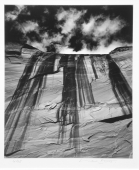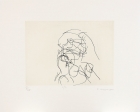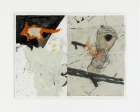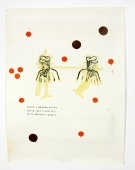
Museum | Queens Museum
Flushing Meadows Corona Park
USA - Queens NY 11368 - United States Google Map
T.: +1 - 718 - 592 9700
Web: http://www.queensmuseum.org/ Email: info@queensmuseum.org
https://www.artist-info.com/museum/Queens-Museum
 Exhibition Announcements Exhibition Announcements 
| Learn more about this service |
|---|

After Midnight |
||||||
|
After Midnight: Indian Modernism to Contemporary India, 1947/1997Mar 8 - Jun 28, 2015, Queens Museum, Queens, NY 11368 The era following India’s 1947 independence was marked by the emergence of Indian modern art led by the Progressive Artists’ Group and their contemporaries. A half-century later, the year 1997 signaled the beginning of a new phase with Indian artists gaining sudden visibility in a newly globalized contemporary art world, while India experienced a surge of paradigm shifts including economic liberalization, political instability, and the growth of a religious right-wing. After Midnight: Indian Modernism to Contemporary India, 1947/1997 presents the juxtaposition of these two historical periods in Indian art for the first time, examining Indian modern art from 1947 through the 1970s, and contemporary art from 1997 to the present. Taking its title from the phrase “Midnight’s Children,” coined by Salman Rushdie in his seminal 1981 novel about India’s transition to independence, the exhibition weaves themes of art and nation-building to reveal shifting zeitgeists in cultural production, and explores how these artistic practices regard and contest a geopolitical consciousness through modernization and globalization. After Midnight presents works by the core members of the Progressives – M.F. Husain, S.H. Raza, and F.N. Souza – and their peers Ram Kumar, Krishen Khanna, V.S. Gaitonde, Tyeb Mehta, and Akbar Padamsee. The exhibition illuminates the journey of these eight artists, examining their work from the 1950s through the 1970s, tracing their influences and engagement with internationalism. While each made requisite visits to Europe in the 1950s, it was during Rockefeller-funded trips to New York City that their work was infused with a new level of experimentalism. To highlight this relationship with New York, After Midnight presents a body of film, photography, and chemical prints inspired by the artists’ interaction with the city’s artistic energy as well as a collection of ephemera from the same period. Critically reflective of the changes witnessed after the economic liberalization and waves of globalization, the artists and works chosen for the contemporary section of After Midnight distinguish the exhibition not as a sweeping survey, but instead as an exploration of the particular avantgarde impetus within the two historical periods of Indian art. It seeks to engage with art practices that carry dialogues and questions emerging from an Indian context to be located within the larger global framework. The Progressives and Modern ArtFounded in 1947 by F.N. Souza, the Progressive Artists’ Group was the most influential group of modern artists in India until it disbanded only nine years later in 1956. Incorporating post-Impressionist colors, Cubist forms, and Expressionistic styles with an Indian vocabulary, the Progressives sought to break from the rigid academism of the Bengal School of Art to encourage an Indian avant-garde engaged at an international level. As citizens of a new Indian nation, they took the liberty to explore, breathing new life into the scene. “Today we paint with absolute freedom for contents and techniques, almost anarchic; save that we are governed by one or two sound elemental and eternal laws, of aesthetic order, plastic coordination, and color composition,” wrote Souza in his manifesto for the Bombay Progressives Art Exhibition in 1948. After Midnight contextualizes visions and ideas like Souza’s, thereby highlighting their contribution to Indian modernity. A Self-Reflexive Gesture, 1997/2015The contemporary element of After Midnight can be characterized as selfreflexive in its collective criticality towards the effects of globalization in India. The works represent issues which are at the core of the nation, including the rise of fundamentalism/fascism, environmental issues, and urbanization. The works of these 18 artists emphatically assert a new ethical underpinning.
|
||||||




































